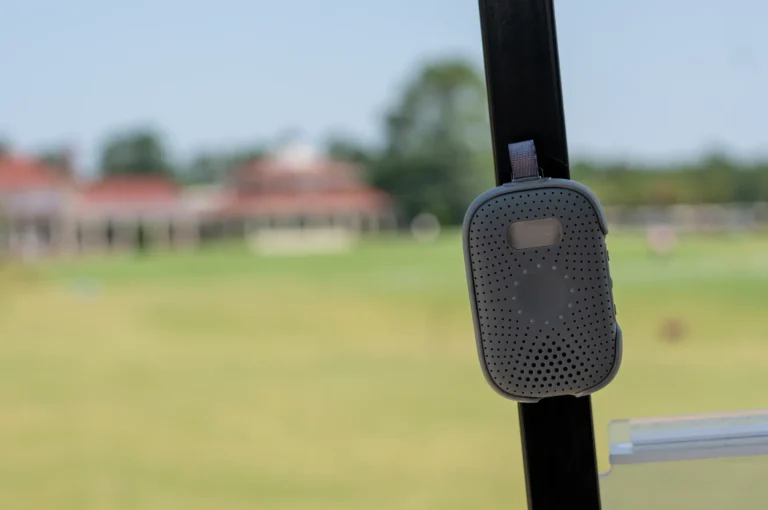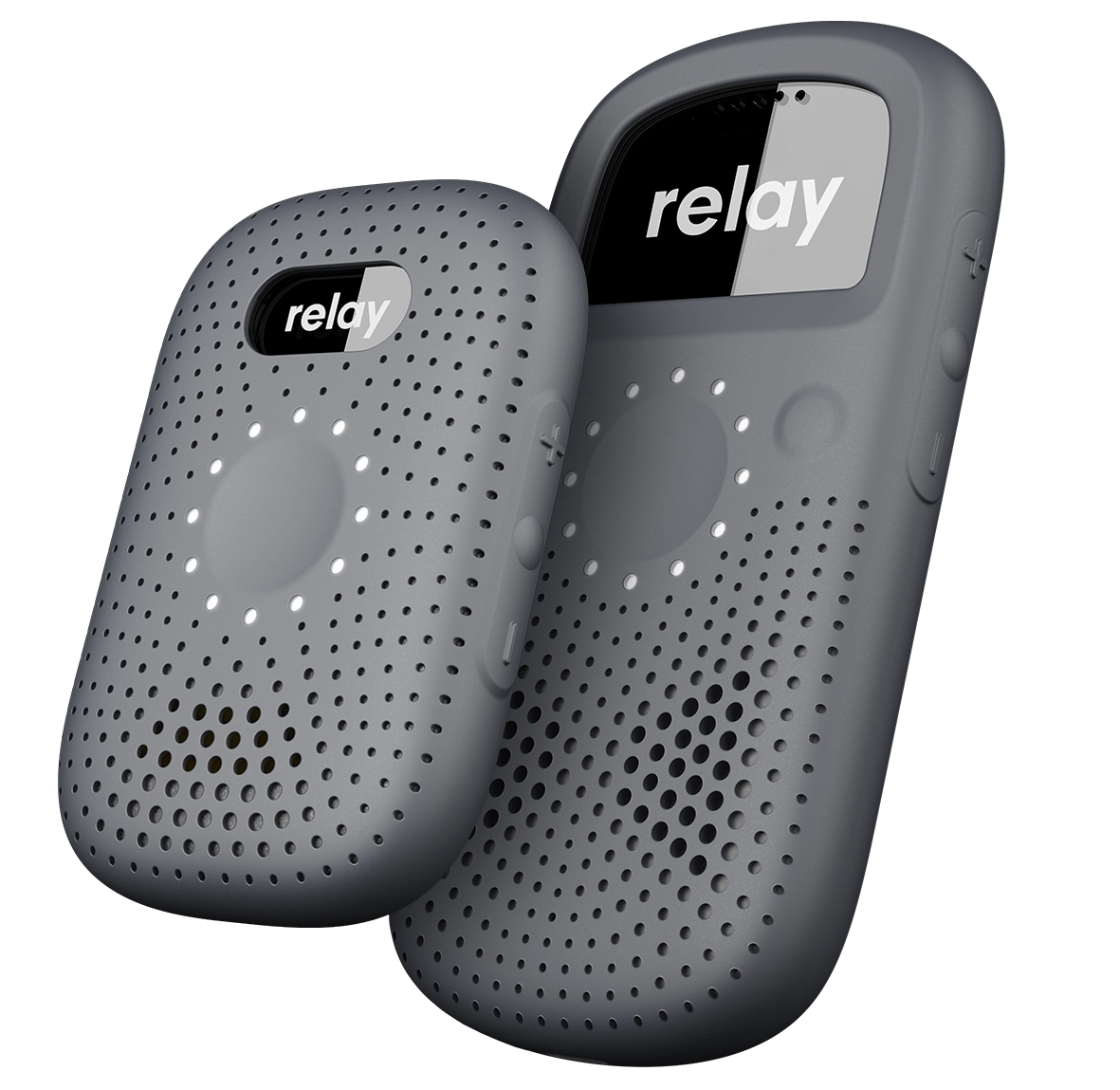Employee safety devices are designed to do exactly what you would imagine – protect your employees from risks, hazards, and potential harm.
But they come in all shapes and sizes – from wearable lanyards that send a discreet alert in an emergency, to high-tech two-way communication devices that benefit your team in more ways than just promoting safety.
Choosing the right employee safety device is important, and it’s good to analyze what’s cost-effective and the most practical for your industry.
In this article, we’ll explain the types of employee safety devices on the market, what their key features are (and why they’re useful), and share the best employee safety devices to safeguard teams.
What is an Employee Safety Device?
An employee safety device is an electronic device used in business to safeguard workers and ensure a rapid response in an emergency. They’re commonly referred to as man-down alarms, lone worker alarms, panic buttons, duress alarms, or SOS panic alarms.
You get different types of employee safety devices – from one-way devices that send alerts to a designated response unit, to two-way radios with advanced worker safety technology and features.
What to Look For in an Employee Safety Device: Comparing Types of Devices
When investing in an employee safety device, it’s important to choose one that works best for your specific business, and safeguards employees against the most relevant hazards they face.
The three main types of employee safety devices are:
- Two-in-one radios with advanced safeguarding technology (like Relay)
- One-way panic buttons
- Walkie-talkies
Two-in-one communications devices with built-in employee safety features
A two-in-one device is a radio (or smart radio) that operates as a communications and safety device all in one. It’s used by workers daily to communicate and deliver productive operations, with built-in, highly advanced worker safety features.
Key features include:
- How it’s worn: As a smart radio, it’s usually clipped to a worker’s uniform or lanyard, and is used at all times while on the premises
- How alerts are delivered: Panic alerts are instantly sent to a first responder (like a security guard, on-site manager, or head office). An app and dashboard enable a personalized emergency protocol to be developed to suit each business’s needs
- How the worker is identified: Each device can be registered to a certain employee, so the first responder knows whose device is activated, but a push-to-talk (PTT) function enables further dialogue
- How location is known: Smart radios have built-in live location tracking via Bluetooth beacons, enabling designated responders to see the live location of the employee in distress
- Communications: Using a combination of cellular and Wi-Fi networks, smart radios offer superior audio quality and interference-free signal across nationwide ranges
- Additional features: As an all-in-one radio for business, standard and optional extras include live language translation, broadcasting (good for sending risk alerts), phone calls, app integration, and dashboard tracking to promote business productivity
Pros and cons of using a smart radio as an employee safety device:
- Pros: It’s a two-in-one solution that’s ideal for businesses that rely on staff communicating effectively across distances. The panic button delivers fast alerts and a real-time location. Plus, the company can easily design the emergency protocol themselves via a dashboard.
- Cons: They may require a subscription (see Relay’s pricing), and the extra communication features may be overkill for employees in some industries.

One-way “panic button” employee safety device
These employee safety devices are wearable and send a one-way alert to a first response team in an emergency.
Key features include:
- How it’s worn: Typically integrated into an ID badge, lanyard, or wrist strap, and is worn at all times while on the business premises
- How alerts are delivered: Generally delivers a panic alert to an external, off-site company responsible for attending to emergency alerts, or an internal team/designated first-responder
- How the worker is identified: The device is assigned to an employee, so the first responder knows which employee’s alarm is triggered
- How location is known: Usually, the employee’s last known location at the point of activating the alarm is sent to the first responder
- Communications: Typically, none, the alert is sent to the designated person, and the emergency protocol is activated, e.g., the on-site manager locates the person and attends the scene
- Additional features: It varies per device, but usually, these one-way devices only provide the panic button, with no additional features
Pros and cons of a one-way panic button:
- Pros: The emergency response is usually handled by an external provider (rather than staff in the company), so it can provide 24/7 support. The one-way panic button is great for lone workers who don’t need to communicate with other employees instantly or daily.
- Cons: There is usually a lag in the alert, which can delay help. With no ability to communicate with the first responder, the alarm user cannot explain the issue or cancel a false alarm. The location shared also isn’t typically live.
Long- or short-range walkie-talkie
Walkie-talkies are often used as an employee safety device and a radio for business. While they can help safeguard employees, walkie-talkies have their limitations. They aren’t very advanced and rely on the employee being in range and able to communicate details of the emergency.
Key features include:
- How it’s worn: Typically clipped to a worker’s uniform or clothing
- How alerts are delivered: Push-to-talk enables the employee to speak into the device and explain the emergency to another walkie-talkie user that’s in range and on the same channel
- How the worker is identified: With no identification features, the employee in distress must communicate who they are
- How location is known: No location-tracking features, instead, walkie-talkies rely on the employee to explain their location
- Communications: As a two-way radio, walkie-talkies can communicate with other walkie-talkies that are in range and on the same channel (subject to walkie-talkie interference)
- Additional features: Walkie-talkies are designed for two-way communication only, so these devices don’t usually come with any additional add-ons or features
Pros and cons of using a walkie-talkie as an employee safety device:
- Pros: Usually free to operate (as walkie-talkies use radio frequencies) and works well for staff in a very small building (where there is unlikely to be range or signal issues).
- Cons: Signal can be unreliable, especially in large buildings or warehouses. The person in distress must communicate their issue and location, which can delay the right help from reaching them.
Best Employee Safety Device: Relay Radios With Communications & Safety/Panic Response
Relay’s radios are an excellent choice of employee safety device. As a two-in-one solution, Relay promotes faster communications during daily operations and ensures the right help reaches staff in an emergency.
Key features of Relay radios include:
Instant panic alarm
Relays panic alarms send an instant notification in less than a second – which is faster than many other devices in the industry. With fast alerts, businesses can respond quickly to emergencies, ensuring employees get the right help without delay.
Real-time location tracking
With built-in, real-time location tracking, Relay radios track the live location of the employee – not just where they were when the alert was pressed. This ensures that help can be sent to moving employees, and that help gets to the right place – right down to the coordinate.
Two-way communication
With two-way comms available, the first responder can talk to the alarm user to understand what to bring, what happened, who to call, and whether a broader alert is required to notify others of the emergency. This can save vital time and ensure the right help is delivered.
FAQs
What are Examples of Safety Devices in the Workplace?
Examples of safety devices in the workplace include PPE (Personal Protective Equipment), such as gloves, hard hats, safety goggles, shoes, or earmuffs, and digital devices, including panic buttons, duress alarms, lone worker alarms, two-way radios, and smart radios.
What is the Best Lone Worker Safety Device?
Lone worker safety devices deliver instant alerts to a first responder when an employee needs fast help. The best devices are fast, discreet, and reliable, with advanced features, like nationwide range, real-time location tracking, and live language translation.
Using a standalone panic button (like a lanyard or wrist strap) is better for industries where no two-way dialogue is needed. For example, it can be beneficial for social workers entering people’s homes alone.
When two-way communication is needed, an all-in-one device (like Relay’s radios) is better, as it minimizes the number of devices an employee has to carry around. Plus, it streamlines emergency responses with daily communications.
What Industries Can Benefit From Employee Safety Devices?
The industries that can benefit from an employee safety device with two-way communication (like Relay) include warehouses, manufacturing, retail, hospitality, large venues, education, facilities management, golf courses, healthcare, food services, or casinos.
Using Relay For Business: The Fast, All-in-One Communications Solution
Relay radios are designed for business. With fast, reliable communication and customizable emergency alerts (from silent panic buttons to sounded alarms), we offer everything your business needs to protect workers from safety risks.
Is it time to upgrade your radios and switch to Relay? Find out with a free, no-obligation demo from our team. Book a demo now.
Tight on time? No problem! Discover how our devices work in your own time via our online video center.







